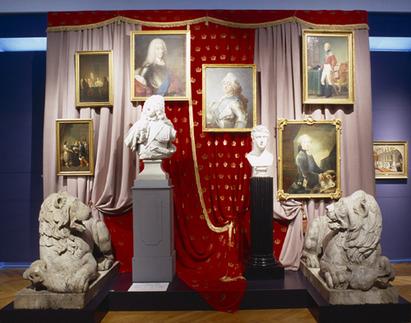
Absolute monarchy (1660-1848)
The Danish absolute monarchy was introduced by Frederik III with a coup in 1660 and was abolished in 1848 with a peaceful revolution after the death of Christian VIII.
Denmark’s monarchy is one of Europe’s oldest, despite changing forms of government and power struggles between various groups in society over the years.
In 1660 the country was in ruins after the wars with Sweden and at an Assembly of the Estates of the Realm in Copenhagen, despite opposition from the nobility, it was decided to make the throne hereditary and to give the king absolute power.
The basis for the modern state was laid during the period of the absolute monarchy, with the building up of a substantial state apparatus employing loyal officials. Military service and taxes were also imposed upon the subjects.
The absolute monarch had great power and all of the citizens of Denmark were his subjects, but the conditions in which they lived varied considerably.
There were great differences between the everyday life of the farmers, with their obligations to the estate owners, life in in the market towns and in the great manor houses. The clergy, who were also the officials of the absolute monarchy, were occupied with wiping out remnants of magical practices and Catholic traditions amongst the population. The absolute monarchy was also the period in which enterprising tradesfolk, with the support of the Crown, could make great profits in the lucrative trading triangle between Denmark, Africa and the Danish West Indies.
Political developments took place in the territory that the absolute monarch ruled over: the dual kingdom of Denmark-Norway, Iceland, Greenland, the Faroe Islands and the duchies of Schleswig and Holstein. During the period there was growing criticism of the absolute monarchy and increasing pressure for freedom of speech. This helped create the basis to transform Denmark into a modern state.
More absolute monarchy?
Visit the exhibition Stories of Denmark at the National Museum in Copenhagen.
